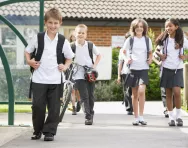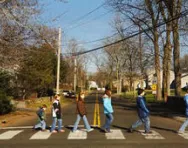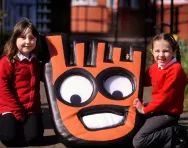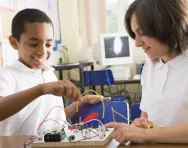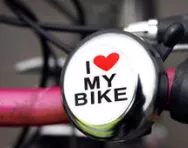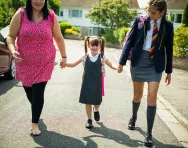Important update from TheSchoolRun
For the past 13 years, TheSchoolRun has been run by a small team of mums working from home, dedicated to providing quality educational resources to primary school parents. Unfortunately, rising supplier costs and falling revenue have made it impossible for us to continue operating, and we’ve had to make the difficult decision to close. The good news: We’ve arranged for another educational provider to take over many of our resources. These will be hosted on a new portal, where the content will be updated and expanded to support your child’s learning.
What this means for subscribers:
- Your subscription is still active, and for now, you can keep using the website as normal — just log in with your usual details to access all our articles and resources*.
- In a few months, all resources will move to the new portal. You’ll continue to have access there until your subscription ends. We’ll send you full details nearer the time.
- As a thank you for your support, we’ll also be sending you 16 primary school eBooks (worth £108.84) to download and keep.
A few changes to be aware of:
- The Learning Journey weekly email has ended, but your child’s plan will still be updated on your dashboard each Monday. Just log in to see the recommended worksheets.
- The 11+ weekly emails have now ended. We sent you all the remaining emails in the series at the end of March — please check your inbox (and spam folder) if you haven’t seen them. You can also follow the full programme here: 11+ Learning Journey.
If you have any questions, please contact us at [email protected]. Thank you for being part of our journey it’s been a privilege to support your family’s learning.
*If you need to reset your password, it will still work as usual. Please check your spam folder if the reset email doesn’t appear in your inbox.
Road safety for tweens: the parents' guide

Independent travel to and from school can be the first real marker of growing up for many children but this year, school disruption means many children have missed their usual road safety teaching at primary school before taking their first steps towards solo travel to secondary school.
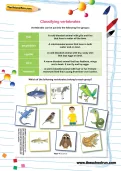
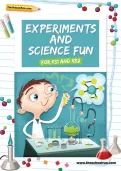
Download fantastic science resources today!
- Experiments And Science Fun pack
- Science Learning Programme for each school year
- All the instructions, questions and information you need
Feel confident in helping your child make the transition safely and happily with road safety tips for tweens from the Child Accident Prevention Trust (CAPT).
Pedestrian road safety accidents: when children are at risk
Most parents appreciate that travelling to and from school alone or with friends brings more risk. The number of journeys may increase and children may be travelling longer distances or using busier roads.
In fact, child pedestrian accidents peak at age 12, linked to independent travel, and over half of serious child pedestrian accidents occur between 3pm to 7pm, coinciding with after-school hours.
But seeing your child becoming more responsible for themselves and feeling their first taste of freedom can be rewarding and needn’t be fraught with anxiety.
Follow CAPT's step-by-step guide to preparing your child to stay safe on the road when they are travelling alone or with friends.
Tween road safety action plan step 1: Be positive and plan
The first thing to consider is the cue your child will take from you. If you approach their school journey and safety with a sense of positivity, it will set the tone for your discussions and should allow for a more open dialogue.
To really engage your tween, focus less on instructing them in the rules of the road and more on listening and asking questions, to encourage them to think for themselves – after all, that’s what they will need to do when travelling alone.
Tween road safety action plan step 2: Put your child in the driver’s seat
Get them to sit down and plan their route to school. Whether walking or using school or public transport, they can map out what route to take and then talk you through it. They can think about which friends they might travel with too.
You can help build their confidence (and yours in them!) by practising the route together or starting with easier routes and building up to the school route.
Tween road safety action plan step 3: Ask questions, avoid instructions
Help your child think through risk and consequences on the road.
For example, if they walk and kick their ball rather than holding on to it, what might happen to a. their ball or b. them if they run out to get it?
We are all mesmerised by our mobiles, but on the road they are a major hazard.
Get them to say the alphabet backwards while you ask them questions. It’s like using your mobile while trying to cross the road – our brains can’t do both!
It's incredibly easy to get distracted by phones, but being alert to traffic is vital and life-saving. Discuss why putting their phone in their bag and taking their earphones out when crossing the road are so important: talking, texting or listening to music while crossing the road could make the difference between a safe journey and an accident. 
Tween road safety action plan step 4: Role-play road safety scenarios
You can also present your child with different scenarios along their route.
Help them practise what to say to their friends to tackle peer pressure, discuss safe crossing places and discuss what to do if they see the bus coming and they’re struggling to cross a busy road – reassure them that being late is better than being hurt. Put the emphasis on making smart decisions.
Talk through what to do in an emergency, what numbers to call and how they can keep in touch with you.
Equip your child with simple reminders for when they are unsure. If they ask themselves, ‘Would I do this with Mum or Dad here?’ and the answer is ‘no’, that’s their answer!
Tween road safety information and resources
For helpful educational resources that your child may have missed, look through the Department for Transport’s Think! resources for 7-12 year olds.
Download Road Safety Scotland's Roadways Road Safety Resource for Youth Groups.
